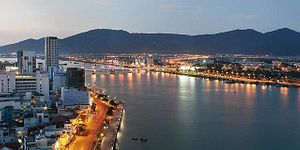Manila, where ASEAN leaders are gathering this week, is a reminder of the region’s remarkable growth, and of one of its biggest challenges.
The bustling Philippine metropolis epitomizes how 50 years of robust economic expansion has prompted unprecedented urban migration in Southeast Asia. But it also illustrates the vulnerability of the region’s booming mega-cities, many of which lay exposed to extreme weather events.
With much of its population living along its 81,000 miles of low-lying coastline, Southeast Asia is arguably one of the regions most at risk from climate change. To sustain ASEAN’s phenomenal economic progress over the next half-century, its leaders must commit to making climate change a central goal of policymaking. How they meet the challenge will determine whether ASEAN’s urban centers will continue to power economic growth and opportunity, or turn into concentrations of vulnerability, where progress is continuously eroded.
We already see how increasingly frequent and intense weather events threaten regional food production, energy security, natural ecosystems and population balance. One has only to consider flooding in Bangkok, Jakarta and Manila that have devastated local economies, and halted ground transportation as well as critical industries, even forcing financial markets to close. Indeed, without efforts to adapt to the climate threat, ASEAN’s urban centers will be among the most vulnerable globally to climate-related disasters, according to a study by the Asian Development Bank and the Potsdam Institute for Climate Impact Research. But cities are also often the first to take action to benefit their citizens and the global communities, even where national governments have yet to step up. With smart policies, ASEAN’s leaders can adopt and fortify the efforts initiated by its cities in designing systems to mitigate against climate risk.
Research by the RAND Corporation and the Rockefeller Foundation shows that a “resilience dividend” – the difference in outcomes between pursuing projects to cope with climate change and failing to pursue such efforts – can be quantified. Dozens of cities in the Asian Cities Climate Change Resilience Network and 100 Resilient Cities, both pioneered by the Rockefeller Foundation, integrate their climate change resilience in their planning, and early results suggest investment in such efforts is making a difference in protecting the long-term well-being and economic competitiveness of these places.
Da Nang in Vietnam offers a powerful illustration. In 2013, Typhoon Nari slashed through the coastal city, where homes constructed under a resilience project stood side by side with regularly constructed homes. More than 4,000 non-resilient homes were severely damaged and required rebuilding, while those that had upgraded to withstand the intensity of storms such as Nari suffered little or no damage. With relatively modest investments, a nationwide effort to upgrade housing and building stock across Vietnam’s vulnerable coastal towns and cities could save billions in the decades ahead.
Looking to our neighbors in India, Surat, the most flood-prone city in the state of Gujarat, was devastated in 2006 when an emergency release from the Ukai dam inundated 75 percent of the city for days. The city lost nearly $5 billion in economic output, and 40,000 low income households saw much of their asset-base wiped out. Scarred by that experience, Surat worked with the Rockefeller Foundation to develop a comprehensive resilience plan, a pioneering effort at the time. One of the actions was to create an end-to-end early warning system involving multiple institutions to manage flooding, greatly reducing the risk of livelihood and business disruptions. In 2013, the city endured a similarly strong pummeling, but flood levels did not rise to calamitous levels, with minimal economic and human damage. These cities show that while we cannot prevent severe climate events from occurring, there is much we can do to prepare and respond to it.
ASEAN was built on the promise of a stronger economic and social progress through multilateral cooperation. Some member states have taken laudable action on the issue – notably advocacy as part of the Vulnerable 20 (V20) economies most exposed to the effects of climate change. But to make a real impact, the region must stand as one. As a trading bloc, ASEAN is on track to be the fourth largest economy by 2030. There is strength in this unity, and ASEAN now has the power to act as a bloc to integrate climate-change resilience into policy and economic planning frameworks. They can start by standing united with their cities, demonstrating political will and providing the right policy support for the efforts already underway to protect these urban centers so they can continue to lead the charge to building a sustainable and strong ASEAN.
Half a century into its journey, ASEAN finds itself on a path to remarkable progress, with its mega-cities at the vanguard. Climate change stands in the way of this trajectory. National leaders cannot afford to wait another 50 years to make climate change resilience a central goal if they want to secure Southeast Asia’s economic future.
Ashvin Dayal is associate vice president and managing director for Asia at the Rockefeller Foundation.

































